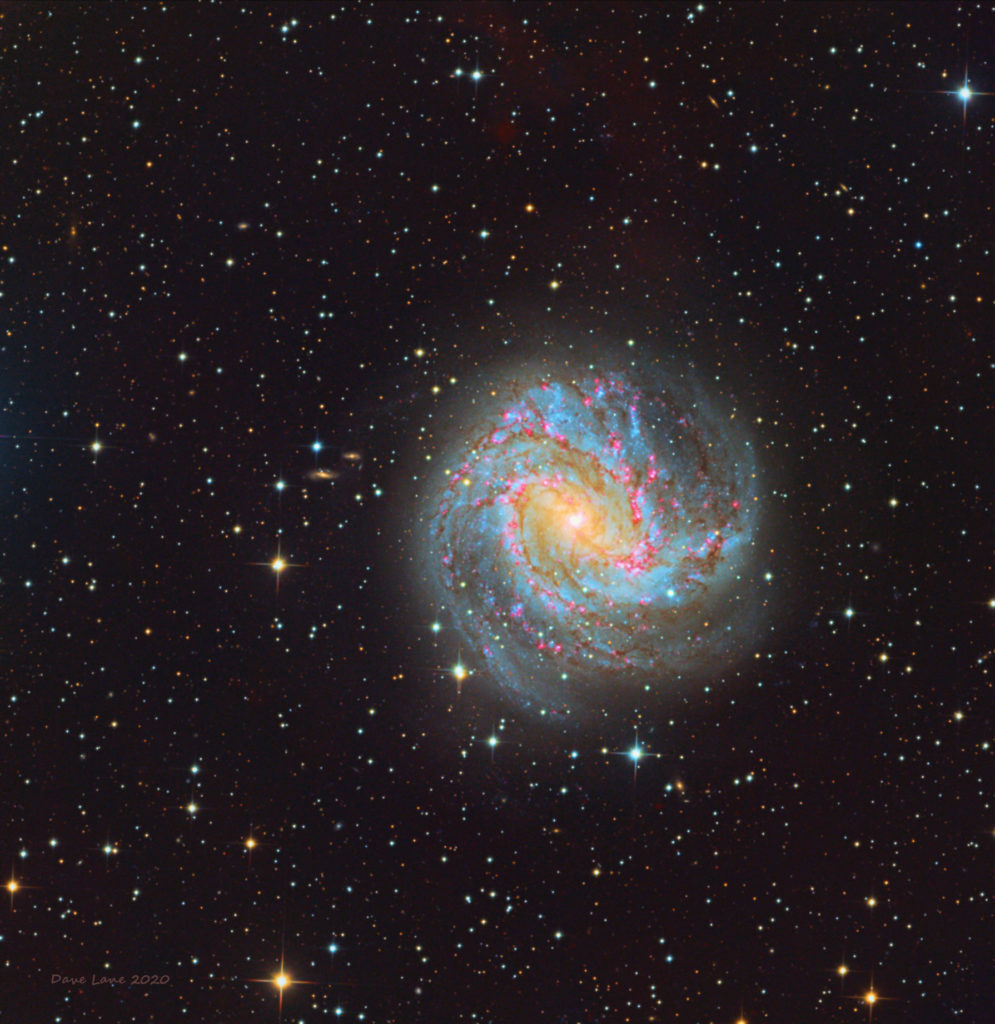Sky Report April 13 – April 19

This is the first of a series of weekly Sky Reports that will alert people to what they can see in the night sky by simply stepping outdoors and looking up, perhaps with a pair of binoculars. The sky is always changing and a lot is happening if you know what to look for.
The first “star” to appear after sunset tonight is the poetically named “Evening Star” – the planet Venus. Venus appears high in the southwest as the sky grows dark, and it outshines every other object in the sky until it sets in the west sometime before midnight. The planet Venus is about the same size as the earth and is 50 million miles distant – currently the closest planet to earth – but what makes it so bright is that it’s covered by dense white clouds that reflect the sun’s light earthward, like a mirror. These clouds also prevent us from seeing through them to its surface.
This week Venus is in the constellation Taurus, the Bull. To the left of Venus is the bright orange star Aldebaran which marks the eye of the Bull, and a similar distance below Venus is the Pleiades, or Seven Sisters, star cluster. Look at the Pleiades with binoculars; how many stars can you see?
Three bright planets are lined up in the morning sky and you can see them best from 5 to 6 a.m. in the southeast. They’re nearly equally spaced, and from left to right they are Mars, Saturn, and Jupiter. Jupiter is by far the brightest, while Saturn and Mars are 1/13th as bright as Jupiter. Mars is slowly moving eastward night by night and it’s slowly increasing its distance from Saturn and Jupiter. The moon will guide you to the planets: on Tuesday morning the 14th it’s to the right of Jupiter; on Wednesday morning it’s below Saturn, and on Thursday morning it’s to the lower left of Mars. Notice Mars’ orange color.
The moon is at its last-quarter phase on the 14th and it will be new (and invisible) next Wednesday the 22nd. Look for the moon low in the southwest in the few hours after sunrise when you can easily see it during the daytime.
We had hoped that newly discovered Comet Atlas (2019 Y4) would become visible to the naked eye later this month and in May, but it seems to be breaking apart and fading. You can see it with a small telescope (but not binoculars) if you know where to look; go to www.Heavens-Above.com for finder charts.
The Sky Report is presented as a public service by the Stellar Vista Observatory, a nonprofit organization based in Kanab, Utah, which provides opportunities for people to observe, appreciate, and comprehend our starry night sky. Additional information is at www.stellarvistaobservatory.org. Send questions and comments to
John@StargazingAdventures.org.






Comments are closed.